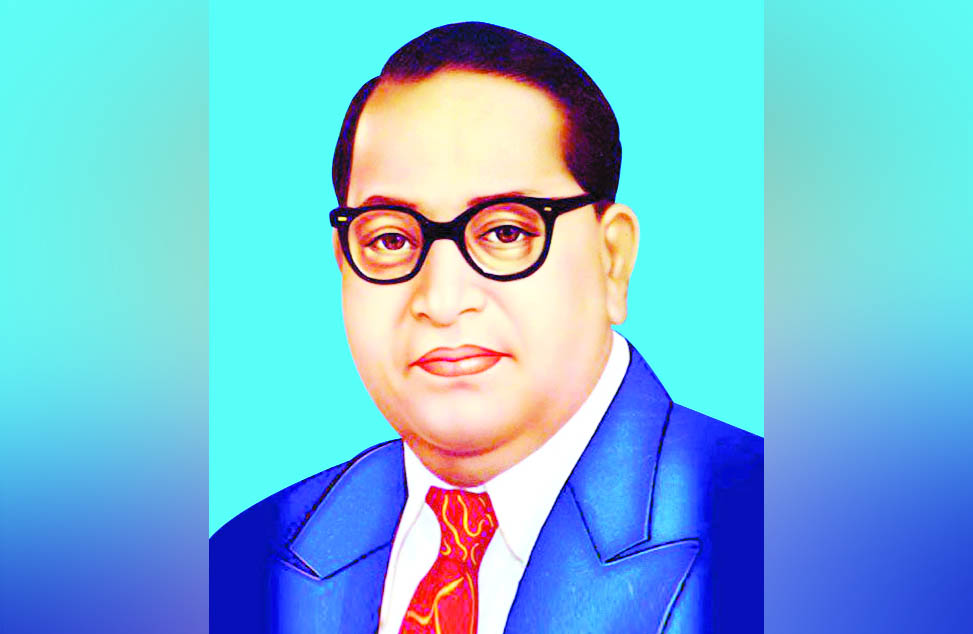Dr. K. L. Bhatia
Dr. B. R. Ambedkar (April 14, 1891 – December 6, 1956) was an erudite intellectual, writer, articulator and crusader of social justice. He was a man of three Ls, viz., Law, Literature and Life. The nuances may be traced from his “Writings and Speeches”: “An ideal society should be mobile, should be full of channels for conveying a change taking place in one part to other parts. In an ideal society there should be many interests consciously communicated and shared. There should be varied and free points of contacts with other modes of association. In other words there should be social endosmosis. This is fraternity, which is only another name for democracy. Democracy is not merely a form of Government. It is primarily a mode of associated living, of conjoint communicated experience. It is essentially an attitude of respect and reverence towards fellowmen”.
The Preamble of the Constitution of India in its poetry in prose language secures to all its citizens Justice (Social, Economic and Political); Liberty (Thought, Expression, Belief, Faith and Worship); Equality (Status and Opportunity); and to promote among them all Fraternity; assuring the dignity of the individual and the Unity and Integrity of the Nation.
The Preamble is the edifice of the textual Constitution of India; the genesis of foundational fundamentals of social justice, liberty, equality and human dignity and fraternity, federalism aiming at unity and integrity of Indian Nation. The means of Social justice are:
“The love of justice is, in most men,
Merely the fear of suffering injustice.”
Be that as it may, social justice, or distributive justice, or compensatory justice, is a quest for justice. It is a challenge of equality, liberty and justice. It is in pursuit of making law an instrument of social change and for reminding thinkers including lawyers and judges that they are social engineers. Law is an instrument of social change must be quid pro quo of its three alphabets: ‘L’ for liberal, ‘A’ for affiant/affiative, ‘W’ for workable. Therefore, rendition of social justice demands to have interaction with social purpose.
Social purpose requires the interpretation of the eternal principles of human freedom to meet the challenging conditions of our times and the application of the fundamental principles of justice to the problems which arise in the complex industrial and commercial life of our era encountered with unforeseen situations as well as disasters caused by the pandemic. Social justice aims at correcting deviances/drifts through the mechanism of effective disaster governance, management and administration. Conscientiously, social justice is entrenched in Fundamental Rights and Directive Principles of State Policy, and both are directed to achieving means as well as ends of social justice. Thus, social justice does not aim at providing justice to ‘haves’ but equally to ‘have-nots’, viz., underserved, disadvantaged, scorned and underprivileged populace. Justice V. R. Krishna Iyer while relying on Dr. P. B. Gajendragadkar expounds: “The concept of social justice thus takes within its sweep the objective of removing all inequalities and affording equal opportunities to all citizens in social affairs as well as economic activities”. It discerns that the Constitution of India brings a renaissance in the concept of social justice when it weaves a trinity of it in the Preamble, the Fundamental Rights and the Directive Principles of State Policy; and this trinity is the conscience of the Constitution. It strives to create a balancing wheel between freedom, political and economic, and indeed makes the survival of democracy.
In the backdrop of the above, Ambedkar dreamt India to be an egalitarian state. The Apex Court of India in Champakam Dorairajan v. State of Madras and Ashok Kumar Thakur v. Union of India cases vouched for egalitarian state that alone could lead to social harmony and social stability, and kindle patriotic feelings. This alone makes our Constitution suprema lex. It is imperative to transform it into reality through innovative as well as craftsmanship attitude under the incisive ‘expounding the constitution’: “Social justice is the end; judicial justice is the means; the legislative and executive operation are human engineering, and together the three branches of Government have to work in comity so that the Constitution may fulfill what the founding fathers designed”.
The working of the Constitution of India has stood the test of time and tide, viz., constitutional patriotism based on the genesis of unity and integrity of the Indian Nation. The federal system is an indispensable basic feature of the basic structure of the Constitution; it supports and intensifies democratic legitimization thus accentuating the democratic aspect of the freedom of the man. The distribution of powers (legislative, fiscal and administrative) carved out in the textual constitutional scheme between the federation (Centre or Union) and the federal Units (States and Union Territories) ensure that the representatives of the population (legislatures and policy-makers) have the capacity to make laws of their own within the law-making scope assigned to the federal units (States and Union Territories) Thus, federalism is a form of government with the potential to cope especially well with the challenges to make Rule of Law a Rule of Life. This is unequivocally reflected in the historic and path-breaking judgment of the Supreme Court of India State Bank of India v. Santosh Gupta (known as SARFAESI Case), which is a mosaic of federalism.
It may be opined that all federal units (States and Union Territories) of federal India, without exception, are mutually friendly reciprocal to each other and not distinct from each other. Union and its federal Units (States and Union Territories) are mutually reciprocal friendly and inter-dependence, not antagonizing, to/on each other and not independent from each other. The federal structure enjoined in the textual Constitution of India by its Founder Authors is magnum opus on the lines of constitutional patriotism.
(The author is DAAD and Max-Planck Fellow and Alumni Former Head and Dean and Founder Director The Law School, Faculty of Law, University of Jammu)


